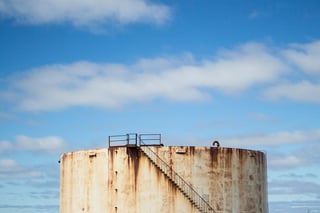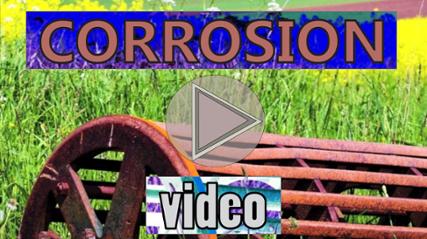"Corrosion Control" generally refers to the implementation of measures to reduce or eliminate corrosion in:
 Metal
Metal- Concrete
- Water
- Sand
- Masonry
- Soil
Corrosion control consists of different monitoring and control techniques used by industries to solve corrosion problems according to their requirements. Such methods are important to avoiding the expense and negative consequences of corrosion.
While corrosion is a naturally-occurring phenomenon, it can cause quality and safety issues and lead to countless environmental hazards. Ships, oil tankers, rail cars, pipelines and nuclear waste facilities are often subject to the dangerous effects of corrosion. Corroded water systems may contaminate drinking water, as evidenced by the Flint water crisis. Situations like these serve as threats to the environment and to public safety, so appropriate corrosion control methods are crucial to prevent the damaging effects of corrosion.
According to corrosion authority NACE International, here are the four common methods used to control corrosion:
- Coatings and linings are principal tools for defending against corrosion. These substances are often applied in conjunction with cathodic protection systems to provide the most cost-effective protection for a structure.
- Cathodic Protection (CP) is a technology that creates a circuit to counteract the normal external corrosion of a structure that contains metal, such as an underground petroleum storage tank or natural gas pipeline. For the most basic CP, a simple piece of metal is attached to the hull of a ship or other vessel to act as an anode, essentially sacrificing itself to the corrosion process so that the actual structure will remain unharmed. Learn more about the basics of cathodic protection. In more complex CP systems called Impressed Current CP systems, a sacrificial anode is used, but also a current is applied to the circuit created by the anode and the structure to carefully maintain conditions for the lowest possible corrosion. Learn more about ICCP systems. On new structures, CP can help prevent corrosion from starting; on existing structures, CP can help stop existing corrosion from getting worse.
- Material selection refers to the selection and use of corrosion-resistant materials such as stainless steels, plastics, and special alloys to enhance the life span of a structure. Some of the most common materials used in constructing a variety of facilities, such as steel and steel-reinforced concrete, can be severly affected by corrosion.
- Corrosion inhibitors are substances that, when added to a particular environment, decrease the rate of attack of that environment on a material such as metal. They can help extend the life of equipment, prevent system shutdowns and failures, avoid product contamination, prevent loss of heat transfer, and preserve an attractive appearance of structures.

Liberty Intercept Blog
Corrosion Control - Let's Break It Down
Posted by Elaine Spitz on Aug 1, 2016 4:16:14 PM
"Corrosion Control" generally refers to the implementation of measures to reduce or eliminate corrosion in:
Corrosion control consists of different monitoring and control techniques used by industries to solve corrosion problems according to their requirements. Such methods are important to avoiding the expense and negative consequences of corrosion.
While corrosion is a naturally-occurring phenomenon, it can cause quality and safety issues and lead to countless environmental hazards. Ships, oil tankers, rail cars, pipelines and nuclear waste facilities are often subject to the dangerous effects of corrosion. Corroded water systems may contaminate drinking water, as evidenced by the Flint water crisis. Situations like these serve as threats to the environment and to public safety, so appropriate corrosion control methods are crucial to prevent the damaging effects of corrosion.
According to corrosion authority NACE International, here are the four common methods used to control corrosion:
Topics: corrosion, corrosion controls, Corrosion Control
Related Posts
Corrosion via Corrugate
What is Corrosion?
The Real Cost of Corrosion
Leave a Comment